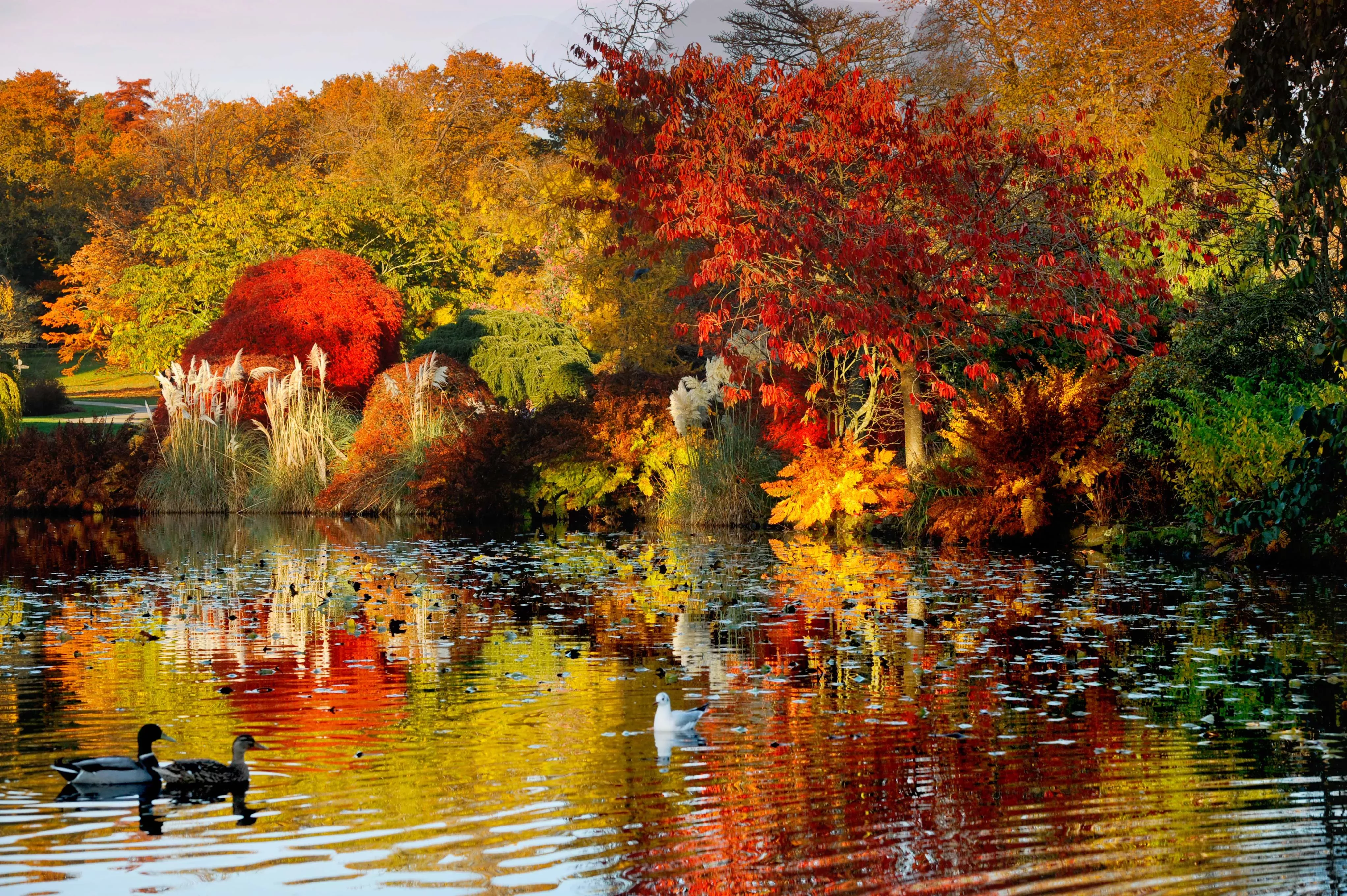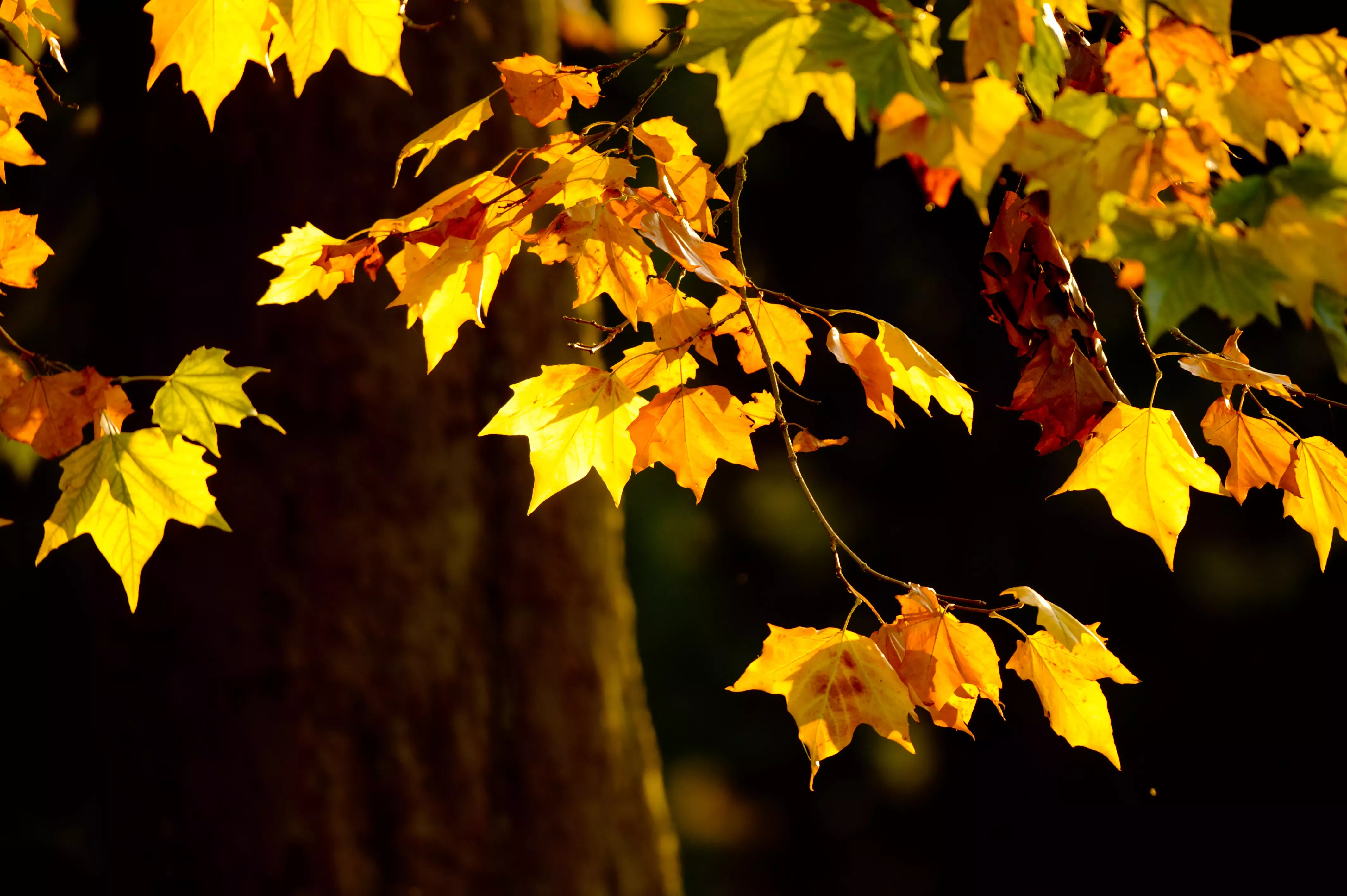19 October 2018
The beautiful autumn changes at Wakehurst
Wakehurst's Head of Landscape and Horticulture, Ed Ikin, has been a man of the land all his life. Raised on a farm, he has worked in horticulture for his entire career. Here he mulls over what autumn in the gardens means to him

The hottest, driest summer in a generation will leave sun-drenched memories for us and a profound legacy for many of our plants.
Shortening days and colder nights tell trees to prepare for dormancy and the change in seasons sparks a multitude of responses from our diverse plant collection.
Green chlorophyll is broken down in the tree’s leaves and recycled, revealing orange and yellow pigments below. New rich reds (pigments called anthocyanins) are synthesised as the leaf’s structure breaks down.
Summer’s intensity stressed our trees as water became increasingly hard to find and for some specimens, dormancy couldn’t come soon enough with autumn colour showing as early as August.
For other plants, the end will be enforced only when hard frost hits and amongst the end-of-season tones, herbaceous plants such Kniphofia, Penstemon, Dahlia and Aster are still growing and flowering strongly.

What I love about October’s seasonal transition is how light shifts in quality, from summer’s broad illuminator to autumn’s skilful manipulator of topography and tree shape.
The strong low sun picks out the depth in our landscape, often accentuated by a swirling fringe of mist, and land that was so starkly presented in high summer regains its mystery and allure.
As the month deepens, there are abundant natural cues emphasising the season’s end: adult buzzards fussing over their fully-fledged youngster, flying in triangles over our woodland glades, finches and tits gathering in large mixed flocks and fungal fruiting bodies emerging almost instantaneously after rain.
October is a month of dramatic change in the landscape and our collections, change that rewards daily observation and reflection.
Our seasons interweave and whilst more vigorous plants suggest summer’s not gone, bare branches elsewhere hint at the winter ahead. It won’t be long before our hardiest bulbs produce the shoots of next spring.

Ed Ikin, Wakehurst's Deputy Director
Ed was previously General Manager for National Trust London, Garden & Countryside Manager for Nymans and Assistant Head Gardener at Chelsea Physic Garden.
He has an MA in Garden History and the RHS Master of Horticulture. Ed is also Fellow of the Royal Society of Arts and Linnean Society and an Expert Panel Member for the Grosvenor Estate’s Corner to Corner project (the transformation of Grosvenor Square).
Ed grew up on a farm estate in West Sussex, spending his time out of school farming, gardening and learning the plants in the hedgerows